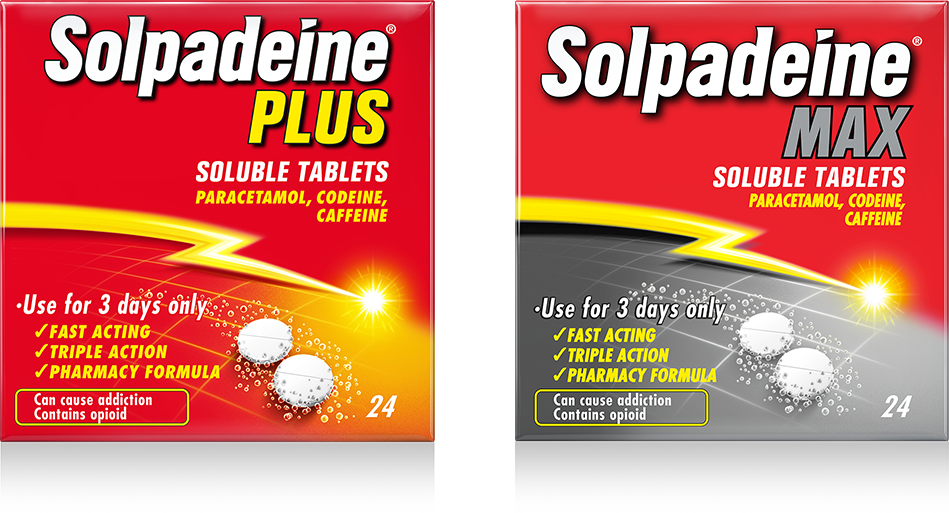How to avoid headaches
From keeping hydrated and getting enough sleep, to cutting out alcohol and managing stress, there are lots of ways to head off a headache before it starts.
Aug 26 2021 · 3 min read

From a dull ache when we are feeling a bit overtired, to more painful throbbing or stabbing sensations in our skulls and flashing lights before our eyes, headaches come in a variety of sensations, durations and intensities and are among the most common nervous system disorders[i].
Almost all of us will experience a headache from time to time[i], and although some types of head pain can be extremely incapacitating and have a significant impact on people’s lives, the majority of headaches are easily treatable at home with simple pain relief products.
Here’s how to tell what kind of headache you might have, and what you can do about it…
So-called ‘primary headache disorders’ such as migraine, tension headache and cluster headache account for nearly 98% of all headaches. Cluster headaches fall into the category of ‘short-duration headaches’ and are pretty rare, whereas migraine and tension headaches are much more common, and are classed as ‘long-duration headaches’[i].
Migraine is a moderate to severe throbbing or pulsating headache on one side of the head which can come with nausea or vomiting and increased sensitivity to light, sounds and even certain smells, and last for a few days[i].
Some people also experience visual symptoms such as zigzag lines – known as ‘aura’ – with a migraine, and others may find they have aura without a headache[i].
Paracetamol, ibuprofen or aspirin are all useful first-line treatments for migraine, and can be bought over the counter from your local pharmacy. They work best if you take them as soon as you know you have a migraine, or at the start of the headache phase if you are experiencing aura[i].
Tension headaches are often described as feeling like an ache or pressure as if the head is being squeezed in a vice[i].
Thankfully tension headaches are rarely debilitating, and respond well to over-the-counter pain relief such as paracetamol and ibuprofen[i]
The pain of cluster headaches lasts for up to three hours and can be so excruciating that they are often called ‘suicidal headaches’. Cluster headaches are more common in young men who smoke, with alcohol consumption being the usual trigger. However, the most obvious sign of a cluster headache is that it occurs on one side of the head, at around the same time every day for a few weeks or months[i].
Over-the-counter painkillers, such as paracetamol, are not effective for cluster headaches because they’re too slow to take effect, so it’s best to see your GP if you think you have had a cluster headache. They will be able to refer you for tests, and work out what the best treatment options are[ii].
It’s also possible to experience head pain and headaches with other conditions or situations. For example sinusitis can cause pain, swelling and tenderness around the cheeks, eyes or forehead[iii], and hayfever can come with headache, as well as pain around the temples and forehead[iv] – and once again paracetamol and ibuprofen can help with the headache pain here[v].
Whatever the headache, your pharmacist will be able to give you expert advice about which the which form of pain relief is best for you if you are not sure. Your local pharmacy is also the first port of call for tried and tested products that can help, including Solpadeine’s range of pain relief medications in a variety of formulations.
However, if your headache keeps coming back, painkillers do not help or your headache gets worse, you feel sick, vomit and find light or noise painful, see your GP or call 111 for further help and advice.
References:
i. Ahmed F. Headache disorders: differentiating and managing the common subtypes. Br J Pain. 2012;6(3):124-132. doi:10.1177/2049463712459691
https://www.ncbi.nlm.nih.gov/pmc/articles/PMC4590146/
ii. NHS Conditions: cluster headaches
https://www.nhs.uk/conditions/cluster-headaches/
iii. NHS Conditions: sinus infection
https://www.nhs.uk/conditions/sinusitis-sinus-infection/
iv. NHS Conditions: hayfever
https://www.nhs.uk/conditions/hay-fever/
v. NHS Conditions: headaches
https://www.nhs.uk/conditions/headaches/
From keeping hydrated and getting enough sleep, to cutting out alcohol and managing stress, there are lots of ways to head off a headache before it starts.
When you go to buy pain relief medicine from your pharmacy or supermarket it can seem like there is an endless choice or formats…
Coughing, sneezing, runny noses and painful sinuses – when winter ailments strike it’s hardly surprising that you can end up…
Solpadeine® Max Soluble Tablets, Paracetamol 500mg, Codeine Phosphate Hemihydrate 12.8mg, Caffeine 30mg For the treatment of acute moderate pain which is not relieved by paracetamol or ibuprofen alone. Contains codeine. Can cause addiction. Use for 3 days only. Always read the leaflet.
Solpadeine® Headache Soluble Tablets contain Paracetamol and Caffeine – a mild analgesic and antipyretic formulated to give extra pain relief. Always read the leaflet.
Solpadeine® Plus, Solpadeine® Max and Solpadeine® Headache products are not recommended for children under 12 years of age.
SolpaOne® 1000mg Effervescent Tablets contains paracetamol only. For the treatment of mild to moderate pain and/or fever. For adults and adolescents over 50kg of body weight aged 16 years and above. Always read the leaflet.
Same trusted formula
Now in 3 day treatment packs, in line with guidance

*New pack size of 24 soluble tablets for 3 day use in adults